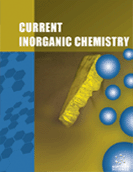Abstract
In mixed-valence assembled metal complexes whose spin states are situated in the spin-crossover region, multifunctional properties induced by the synergetic effect between spin and charge are expected. Based on this viewpoint, we have developed a ferromagnetic mixed-valence system, A[FeIIFeIIII(dto)3] (A = (n-CnH2n+1)4N, spiropyran; dto = C2O2S2). In (n-C2H2n+1)4N[FeIIFeIII(dto)3], we observed a charge transfer phase transition (CTPT) at 122.4 K and 142.8 K for n = 3 and 4, respectively, where a thermally induced charge transfer occurs reversibly between the FeII and FeIII sites. In contrast, the CTPT does not occur for n = 5 and 6 at ambient pressure. From the analysis of heat capacity, the CTPT is regarded as a spin-entropy driven phase transition to minimize the Gibbs energy in the whole system. The appearance of CTPT and the Curie temperature for (n-C2H2n+1)4N[FeIIFeIII(dto)3] significantly depend on the size of (n-CnH2n+1)4N+. In the case of (SP-Me)[FeIIFeIII(dto)3] (SP = spiropyran), the photo-isomerization of SP-Me by UV light irradiation induces the CTPT on the two-dimensional [FeIIFeIII(dto)3] layer and the remarkable change of Curie temperature.
Keywords: Calorimetry, charge transfer interaction, charge transfer phase transition, dithiooxalate ligand, ferromagnetism, heat capacity, Gibbs energy, mixed-valence, molecular magnetism, photo-induced phase transition, pressure effect, spin entropy.
 15
15


